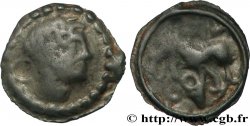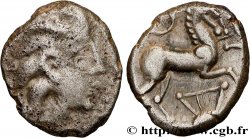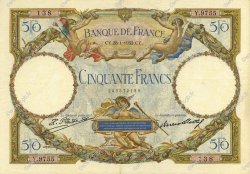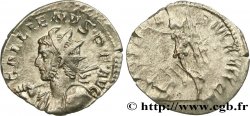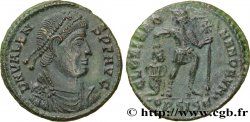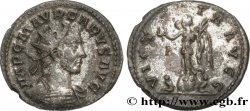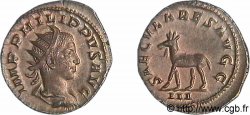v57_0435 - EDUENS, ÆDUI (BIBRACTE, Area of the Mont-Beuvray) Statère en électrum au triskèle, type de Chenôves
MONNAIES 57 (2013)
Starting price : 600.00 €
Estimate : 900.00 €
unsold lot
Starting price : 600.00 €
Estimate : 900.00 €
unsold lot
Type : Statère en électrum au triskèle, type de Chenôves
Date: c. 70-50 AC.
Mint name / Town : Autun (71)
Metal : electrum
Diameter : 16,5 mm
Orientation dies : 9 h.
Weight : 6,44 g.
Rarity : R2
Coments on the condition:
Statère frappé sur un flan court et très épais, avec des types complets et bien identifiables des deux côtés, mais de frappe molle ou issu de coins usés. Patine sombre et brillante, comme anciennement astiquée, avec un métal hétérogène et très fortement chargé en cuivre
Obverse
Obverse legend : ANÉPIGRAPHE.
Obverse description : Tête humaine laurée à gauche, la chevelure stylisée ; grènetis.
Reverse
Reverse legend : ANÉPIGRAPHE.
Reverse description : Cheval galopant à gauche ; au-dessus du cheval, l'aurige ; triskèle sous le cheval.
Commentary
Ces monnaies du type de Chenôves se divisent en trois types ; à la lyre (classe I), à la rouelle (classe II) ou au triskèle (classe III).
Ce statère de la classe III correspond exactement au DT. 3181. Un exemplaire de cette classe et provenant du trésor de Chenôves présente un cheval androcéphale (n° 11 du musée de Mâcon).
Cet exemplaire est particulièrement complet pour ce type !.
Ce statère de la classe III correspond exactement au DT. 3181. Un exemplaire de cette classe et provenant du trésor de Chenôves présente un cheval androcéphale (n° 11 du musée de Mâcon).
Cet exemplaire est particulièrement complet pour ce type !.








 Report a mistake
Report a mistake Print the page
Print the page Share my selection
Share my selection Ask a question
Ask a question Consign / sell
Consign / sell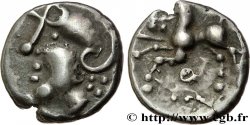
 Full data
Full data

